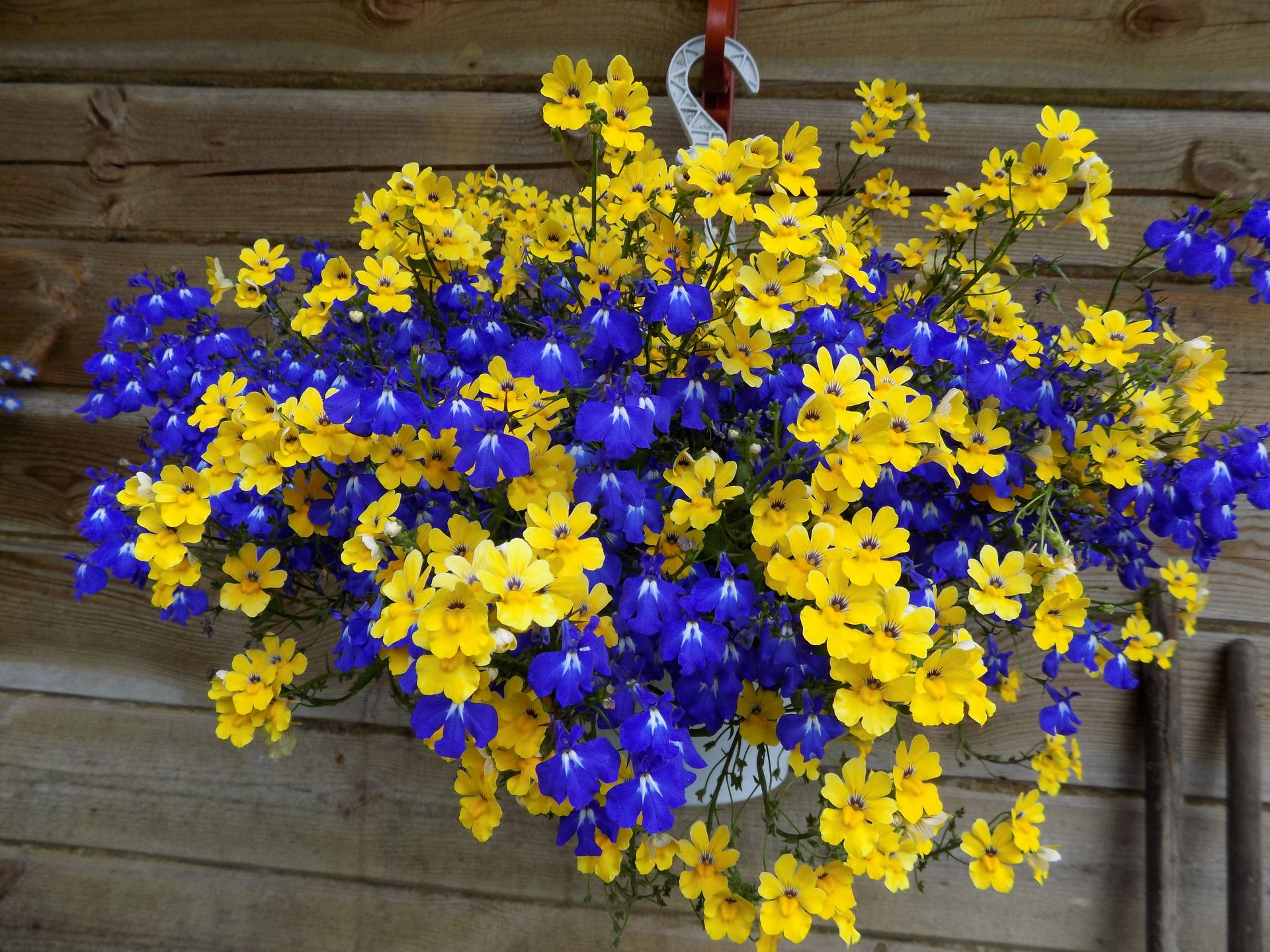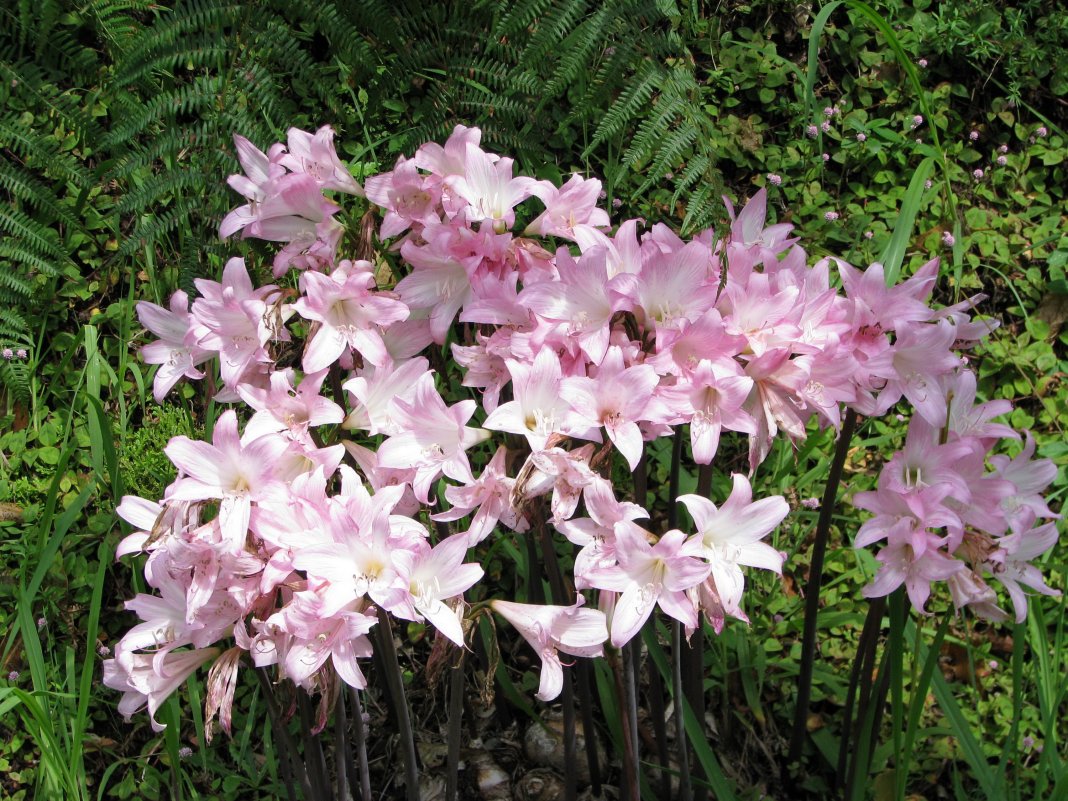Plants, especially flowering plants, are usually planted in standard factory-made pots. But if you think a little, then completely unexpected objects can be adapted for flower containers, from which it is easy to make flowerpots yourself.
Book
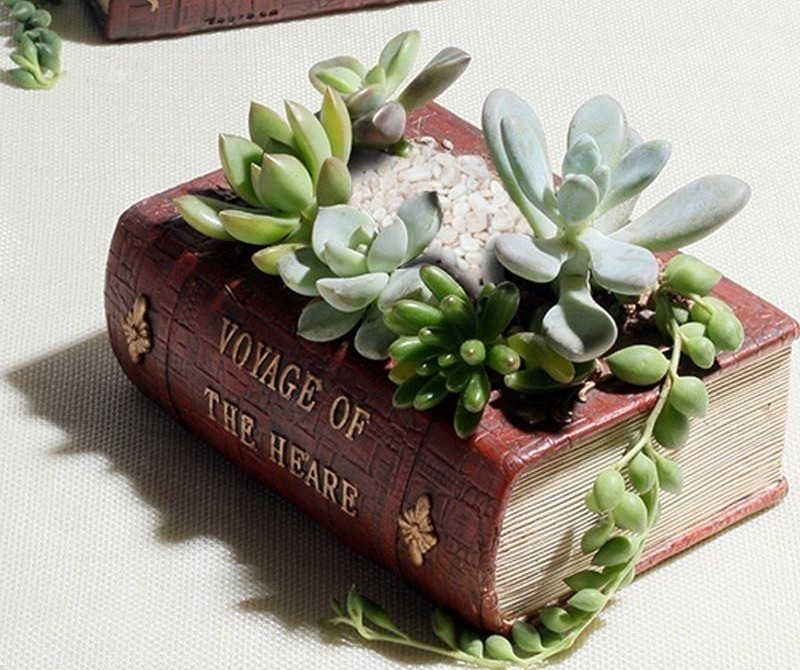
To create such a stylized pot you will need:
- an old, very large and thick book;
- sharp clerical knife;
- PVA glue;
- glue gun;
- thick polyethylene;
- small pebbles or seashells.
It is better to choose a plant from the succulent family - it will have enough space in a small and low container.
PVA glue is diluted with water in a ratio of 1x3. All pages are alternately glued to the inside of the back cover. Leave the front flyleaf and top cover free.
After the glue dries, a rectangle is marked out on the title page, departing from the edges 2-3 cm (you can leave the name and year of publication of the book). With a clerical knife, all pages up to the back cover are cut along this contour.
The walls and bottom of the formed cavity are pasted over with a piece of thick polyethylene (use a glue gun). The edges are decorated with pebbles or shells. A layer of expanded clay is poured at the bottom, and the container is filled with suitable soil. An unpretentious plant is planted in a finished pot.
Guitar
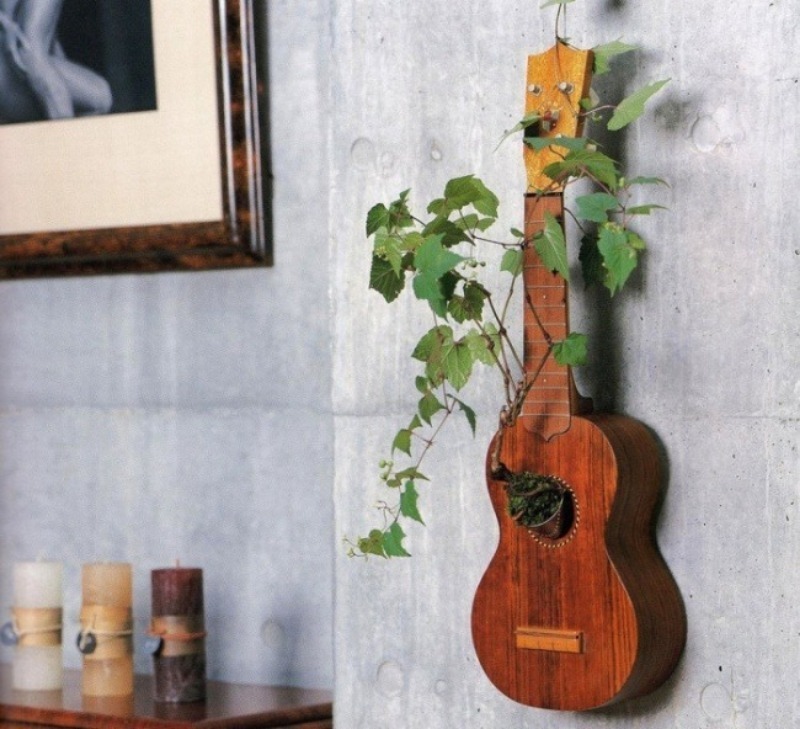
An unnecessary musical instrument acts as a decorative planter for placing a climbing plant pot.
The strings are removed from the old guitar, the back deck is carefully removed. A wall pot is glued to the inner cavity with the flat side, and the stem is picturesquely brought out through the resonator hole.
It is advisable to hang the guitar on the wall near the window. You should try to water the flower carefully so as not to wet the tree.
From felt
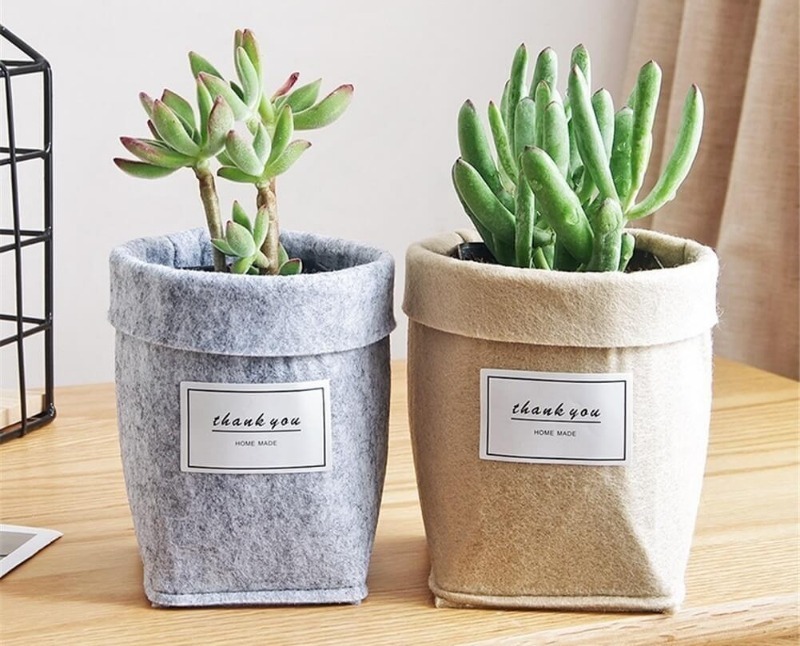
Flowerpots made from thin felt or its substitute look very unusual.
A square with a side of 15 cm and a strip measuring 62 cm in length and 30 cm in width are cut out of the material. The strip is sewn into a cylinder, and then, twisted, sewn to a square base. The upper edge of the resulting bag is tucked 3-4 cm in order to increase the rigidity of the structure.
The bottom is reinforced with a piece of plywood or plastic, and the outer surface of the pot is decorated with decorative elements or a laminated tag with the name of the planted plant is hung.
Before filling the flowerpot with earth, a drainage layer must be poured onto the bottom.
Brick
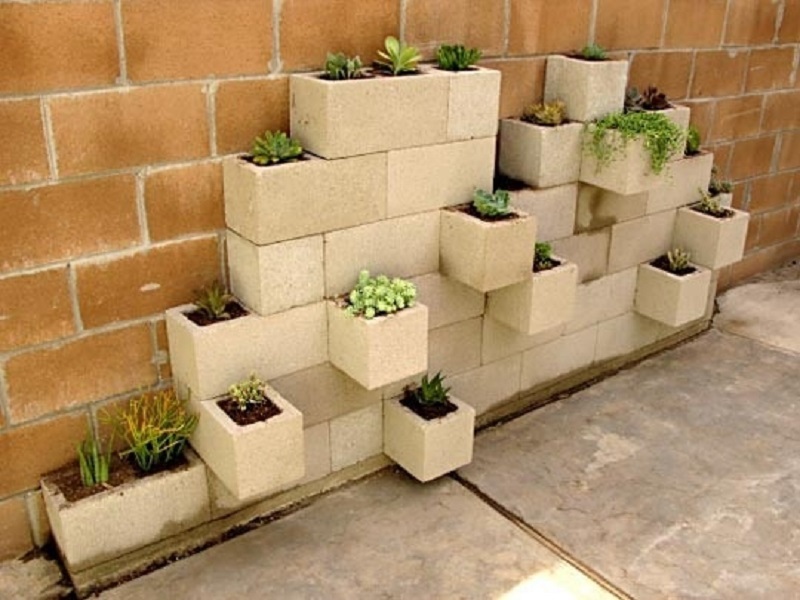
Often, after the construction of a house or a fence, unused hollow cinder blocks remain. From these bricks in the yard, you can build an asymmetric "high-rise building", and in their cavity plant plants that bloom at different times.
Such flowerpots are very durable - cinder blocks are designed to serve for at least 100 years. True, they are afraid of moisture. Therefore, the structure should be placed under the roof of the house at some distance from the ground.
Coconut shell

Coconut shells are used for many crafts. A pots made of this strong peel, suspended on a fleecy jute twine, look very colorful.
Broad-leaved succulents will take root well in a small vessel. They will look like sprouts emerging from a nut.
Crocheted pots
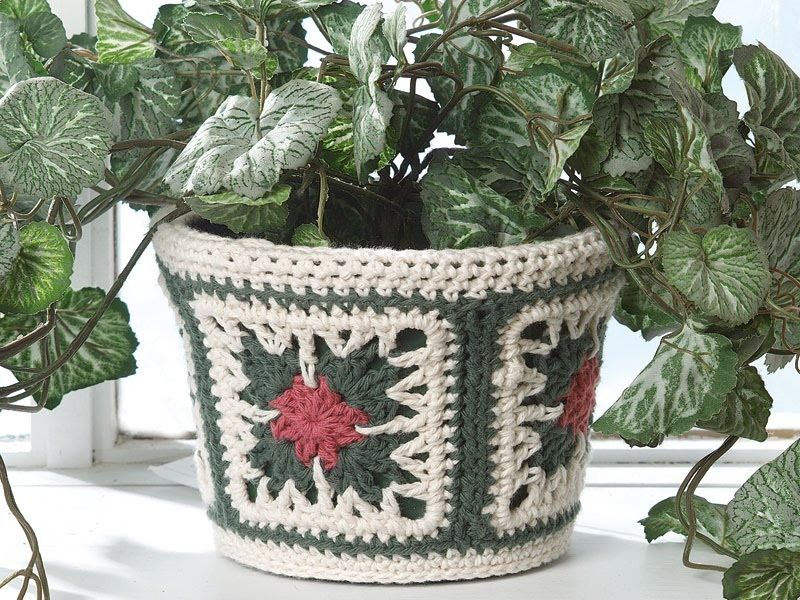
In order to create such a cute case, you need to be able or learn to crochet. The scope for a flight of imagination is limited only by the size of the flower pot. It is very convenient that the planter can be removed at any time for washing or replacement.
A rock
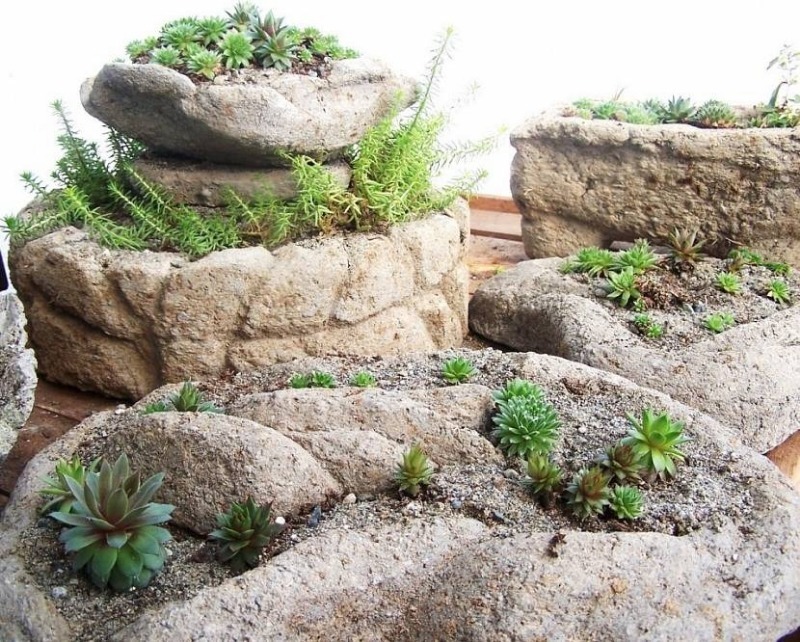
If a summer resident has a large plot at his disposal, then you can build a garden of stones or a full-fledged alpine slide on it. But even in a small area there is a place for a miniature rockery.
To create a portable stone-flower arrangement, you need to find several colorful cobblestones with grooves. Fill the cavities with soil and plant in them drought-resistant alpine flora (for example, rock sedum).
Stone containers can also be made from soft sandstone yourself. If the specimen is caught loose, with a large number of natural holes, then the extra partitions can be removed with a boot knife. And in a dense stone, having drilled holes with a drill, prepare the necessary recess with a hammer and a chisel.
Old suitcase
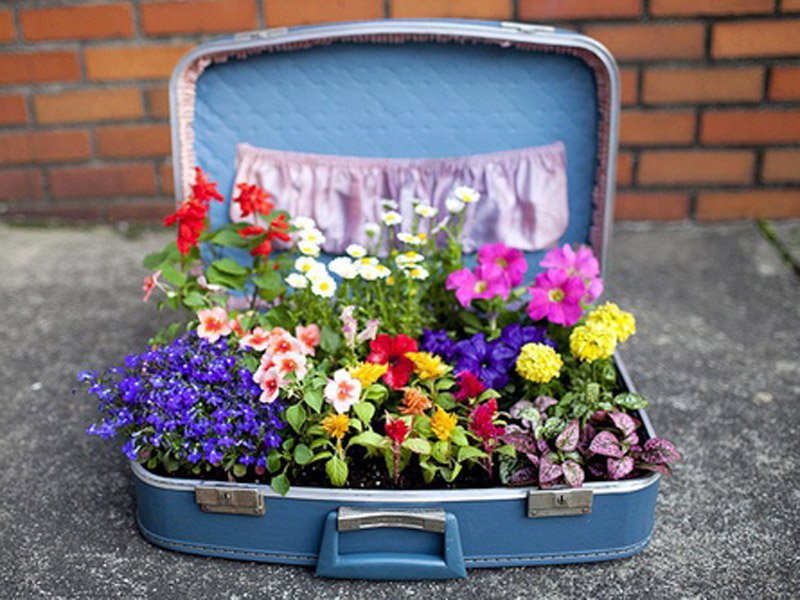
Old suitcases with metal latches are a thing of the past. But someone still has these unfashionable, but still solid trunks in the attics or in the back rooms.
Such a durable object can make a roomy outdoor flowerpot for planting several plants at once. You should not remove the lid, but only open it flamboyantly. The result is a portable flower bed that can be placed anywhere in the garden. And for the cold period, transfer it to a closed room.
Wicker basket
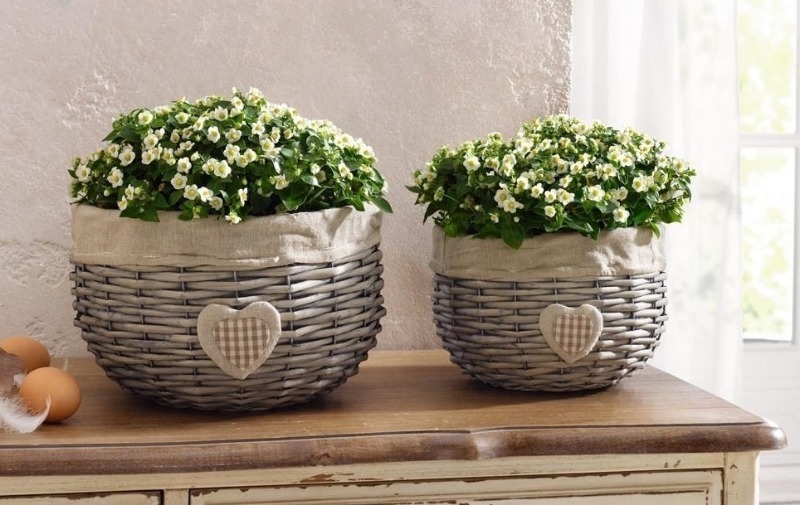
A wicker basket filled not with mushrooms and fruits, but with flowers will look no less extravagant next to a suitcase flower garden.
Trees

Succulents and sedums look very natural in flowerpots made from dry logs and driftwood. Excavations in wood are much easier to make than in stone. For this you will need:
- electric drill;
- feather drills;
- chisel and chisel;
- mallet.
In the place where the notch will be, many holes are drilled (first along the contour, and then inside the trunk). Striking the chisel with a mallet, all internal partitions are destroyed. Having trimmed the notch with a chisel, it is treated with an antiseptic impregnation.
Also, all edges are treated with an antiseptic against pests, and the bark is tinted with stain and covered with colorless varnish. The pot is ready for filling with soil and planting plants in it.
